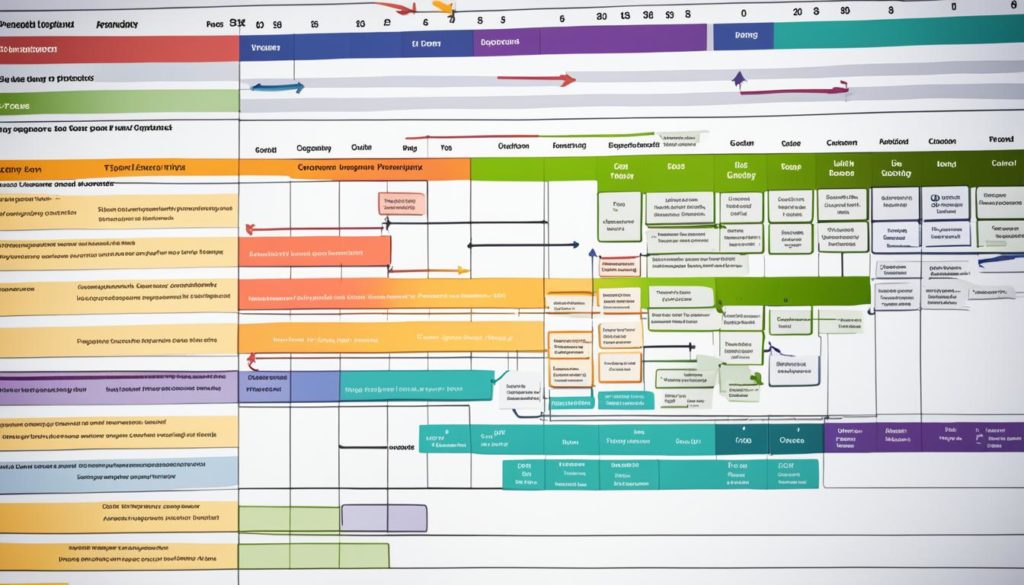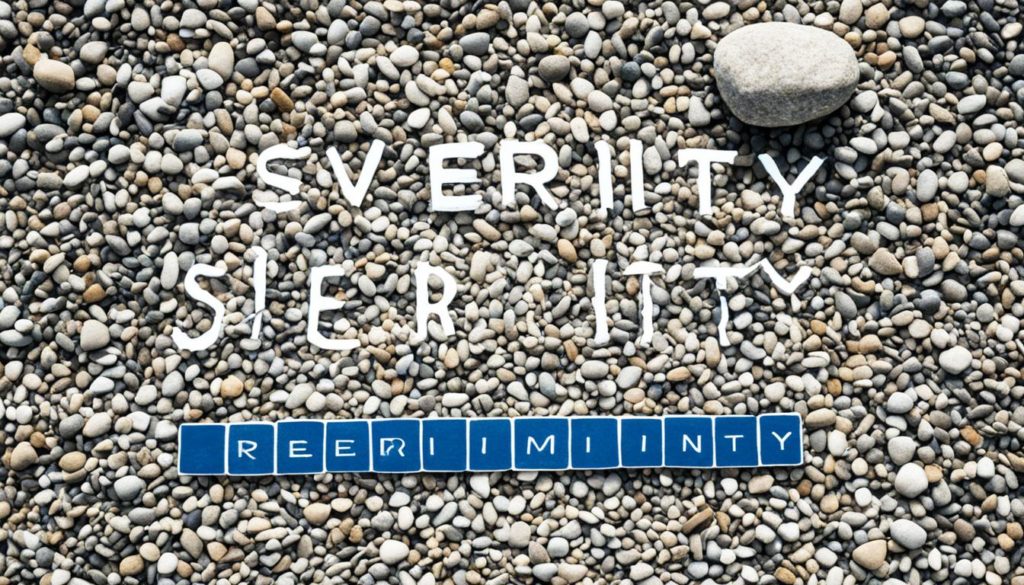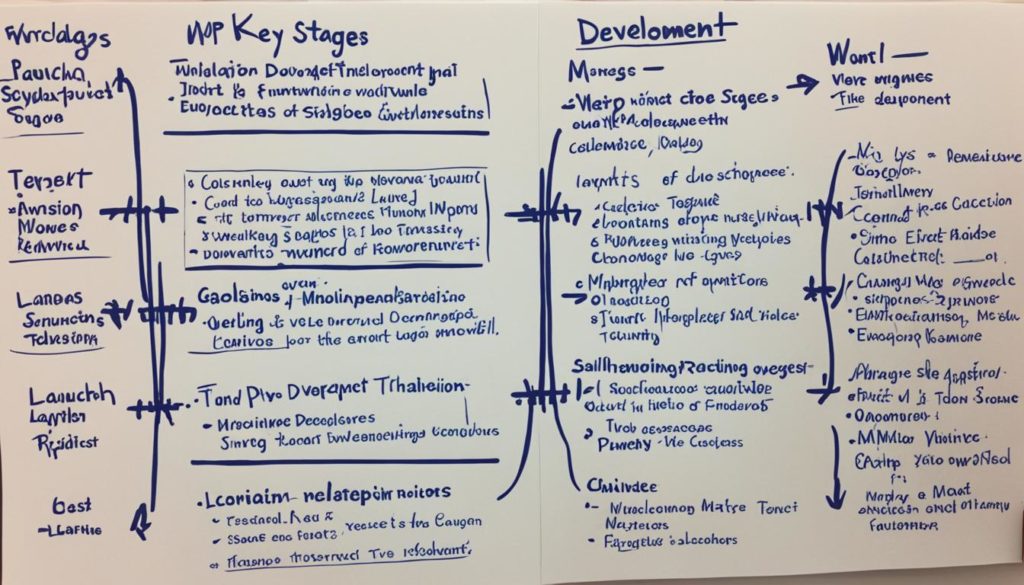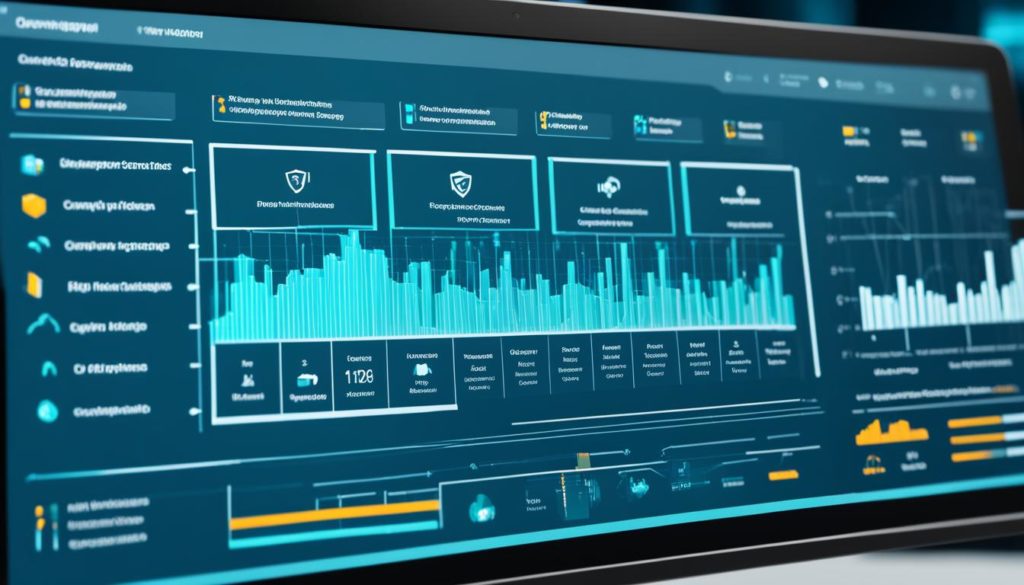
Did you know that poorly managed projects waste nearly 12% of resources? This fact comes from PMI’s Pulse of the Profession. It shows how vital a well-structured project plan is. In this article, we’ll guide you through the best project planning checklist. It’s designed to help you succeed from the beginning to the end.
With a project planner tool and a thorough task tracking system, we’ll cover key steps. These include doing detailed project research, setting clear goals, and keeping stakeholders in the loop. Following this 12-step checklist will let you use resources wisely, prevent scope creep, and hit your project targets.
Key Takeaways
- A structured checklist makes projects run smoother and wastes fewer resources.
- Start with in-depth project research to have a strong foundation.
- Make sure your project goals are clear and well-defined.
- Stay in touch with stakeholders often to prevent unexpected changes.
- Use project planning tools and systems to track tasks for better control.
Setting the Foundation for Your Project
Setting a strong foundation for your project is very important for success. It includes doing thorough research, defining clear goals, and making sure everyone agrees. Let’s look into how to make a good project checklist and timeline.
Conducting Project Research
The first thing in any project is to do careful research. You need to look at past projects, study methods, and check out industry trends. This helps build a solid plan for your project. By learning from before and knowing the latest ways, we can make a firm base for our checklist and timeline.
Defining Project Goals and Objectives
After researching well, we need to set clear goals. These goals go into a project scope statement. It outlines all the details, timelines, and main tasks. Having a project timeline helps us see these parts clearly. The goals must be SMART: Specific, Measurable, Achievable, Relevant, and Time-bound. This makes sure they fit our project vision well.
Engaging with Project Stakeholders
Talking with project stakeholders is key to get their support and match expectations. This conversation helps us know limits and avoid unexpected changes. It’s also important for agreeing on the budget and deadlines. Feedback from stakeholders improves our checklist and timeline.
Getting stakeholders involved ensures our project goals are complete and realistic. This puts our project on a path to be successful.
Now, with good research, clear objectives, and engaged stakeholders, we’re ready for detailed planning and budgeting.
Planning and Budgeting
Effective planning and budgeting are keys to any project’s success. We begin by organizing the project into phases and workflows. It’s important to make sure every task fits the goals. We will cover how to make a project plan, budget, and use resources well.
Creating a Detailed Project Plan
Building a detailed plan means breaking the project into smaller parts. Key steps include:
- Defining project goals and objectives
- Involving key stakeholders early on
- Listing necessary resources
- Creating a work breakdown structure
- Scheduling project execution
This checklist shows the need for early planning and organized workflows. Planning tools help outline budgets and timelines. Projects planned in advance are more likely to finish on time by 15%.
Developing a Project Budget
Every project budget should cover all costs. Knowing the total budget helps check if things are on track. These metrics are useful:
| Metric | Description |
|---|---|
| Earned Value (EV) | Calculated by multiplying the total project budget by the percentage of project completion. |
| Cost Variance (CV) | Difference between the earned value (EV) and the actual cost (AC). |
| Schedule Variance (SV) | Difference between the budgeted cost of work performed (EV) and the planned value (PV). |
Good budget planning reduces cost overruns by 30%. A solid planning checklist helps with managing finances and checking project health.
Allocating Resources Effectively
Matching team skills to project needs ensures good use of resources. Planning who you need reduces delays by 25%. Choosing the right tools and software helps achieve goals.
It’s important to match resources with your budget for success. Centralized documents can make the team 15% more efficient.
Breaking down these steps makes for successful project planning. Regularly checking progress leads to a 10% boost in performance. It’s essential to add these steps to your project checklist.
Project planning checklist
A project planning checklist covers every part of your project. It helps everything run smoothly and successfully. We’ll show you how to lay down a strong foundation. This includes making schedules, managing risks, talking things through, and keeping records.
Setting a Project Schedule and Milestones
Creating a detailed schedule is key in project planning. A good project planner tool makes it easier to figure out how long tasks will take. It also helps divide time for different parts of the project. Using a project timeline template can set clear milestones. This lets us keep an eye on progress, whether it’s a short or long project.
Developing a Risk Management Plan
It’s crucial to have a plan for dealing with risks. This avoids surprises that could throw the project off track. A project planner tool helps foresee risks, plan for what-ifs, and come up with ways to lessen uncertainties. Proper risk checking means we’re ready for any unexpected issues.
Establishing a Communication Plan
Good communication keeps everyone involved up-to-date. A well-made communication plan sets out how to share updates, how often we’ll check in, and which ways we’ll use to talk. It keeps things clear and makes sure no one is left wondering what’s happening in the project.
Documenting Processes and Keeping Records
Keeping detailed documents of everything is crucial. It helps us keep track of decisions, changes, and how the project is going. This way, we can look back at what we did and solve any problems that come up. Good record-keeping helps not just now, but also in the future.
Monitoring and Adjusting Your Project
It’s key to keep an eye on each task and the whole project. Adding a project management checklist to daily work helps check progress. This keeps your project on track.
Using a task tracking system helps managers keep things in the right order. It stops tasks from being missed or incomplete. Tools like Gantt charts help make smart decisions by showing what needs attention.
Checklists are also crucial for managing risks. They help ensure all parts of the project meet the needed standards. This keeps the project on time, within budget, and scoped correctly.
Project managers must learn from past projects. Using evaluation surveys improves future projects. A work breakdown structure makes planning easier by showing resource and task connections.
Following a project management checklist gives clear insights for approval. Setting SMART goals keeps the project focused and directed.
A checklist helps stick to the budget and timeline, saving both time and money. Check out how to make a simple project management checklist for better task management and efficiency.
Conclusion
An project planning checklist is crucial for success. It acts as a thorough guide for managing a project. This includes research, setting goals, engaging stakeholders, planning, budgeting, creating a schedule, managing risks, communicating, documenting, and monitoring.
Using a project management checklist, project managers improve efficiency, responsibility, and outcomes. Careful step-by-step execution helps the team work better together. This ensures projects are completed successfully, enhancing the organization’s reputation.
| Component | Description |
|---|---|
| Research | Conducting comprehensive project research to gather pertinent data. |
| Goal Setting | Defining clear and achievable project goals and objectives. |
| Stakeholder Engagement | Involving key stakeholders for feedback and support. |
| Planning and Budgeting | Creating a detailed project plan and developing a realistic budget. |
| Schedule Setting | Establishing a project schedule with essential milestones. |
| Risk Management | Developing a plan to identify and mitigate potential risks. |
| Communication | Establishing a communication plan to ensure seamless information flow. |
| Documentation | Keeping detailed records and documentation throughout the project. |
| Monitoring | Continuously tracking and adjusting the project as needed. |
By adhering to these guidelines, project managers can successfully navigate challenges. They ensure the project planning checklist is followed for great results.
Project Planning and Management Resources
Using the right tools can greatly improve project efficiency and success. A thorough project management checklist is a good start. There are also many tools and templates available. They help with planning, tracking tasks, and making sure everything is accurate.
Software like Wrike and Rodeo Drive offer lots of help. They are good for scheduling, budgeting, managing risks, and keeping in touch. Techniques like the Work Breakdown Structure (WBS) make big projects easier to handle. WBS can be about deliverables or phases, depending on what the project needs.
Adding methods like Agile or Six Sigma makes planning more structured and efficient. Using these tools helps us use resources better and keep track of progress. We can also talk to stakeholders more effectively. It’s also useful to have a project planning checklist in Word and PDF.
Keeping up with the latest tools and methods is key. It ensures our projects are not just well-planned but also carried out precisely. Whether it’s using Gantt charts or a project planner tool, these resources improve our project’s quality and success rate.
FAQ
What is the importance of conducting thorough project research?
Conducting thorough research is key to a project’s success. It involves examining past projects, the latest methods, and trends in the industry. This builds a solid foundation for the project vision.
How do I define clear project objectives and scope?
Start by setting definite goals and objectives. Outline these in a project scope statement. This statement should include project limits, timelines, and main activities. Getting an agreement from all stakeholders is crucial to avoid scope creep.
Why is stakeholder engagement crucial in project planning?
Involving stakeholders makes sure everyone has the same expectations. It also clarifies any limits and assumptions. This is important for keeping the project within its budget and time frame.
What are the key components of a detailed project plan?
A detailed project plan has organized phases and workflows. Each task supports the project goals and outcomes. It’s also important to have a project timeline template for tracking.
How can I develop an effective project budget?
Create a budget that covers both direct and indirect costs. Focus on the project’s overall profitability. Make sure to allocate resources according to the budget.
What factors should be considered when allocating resources?
Match team skills with different project parts. Choose the best tools and software for achieving the project goals. Resource allocation should match the budget.
How do I set a project schedule and milestones?
Make a schedule based on how long tasks will take and the project phases. Include milestones to mark progress. This helps in tracking for both short and long-term projects.
Why is a risk management plan essential?
A risk management plan spots potential problems early. It states how to lessen their impact. This plan keeps the project moving smoothly.
How do I establish an effective communication plan?
Develop a communication strategy that keeps everyone informed. Make roles, responsibilities, and project updates clear. This keeps everything transparent and accountable.
What is the role of documentation in project planning?
Good documentation helps with responsibility and solving problems. It serves as a point of reference for any post-project questions.
How can I monitor and adjust my project effectively?
Constantly check on tasks and the project’s overall progress. Using a task tracking system helps. This makes sure the project stays in line with its goals.
What resources can aid in project planning and management?
Different tools and templates can help. Use project timeline templates and task trackers. Software like Wrike and Rodeo Drive offer useful features for planning.
Future App Studios is an award-winning software development & outsourcing company. Our team of experts is ready to craft the solution your company needs.










